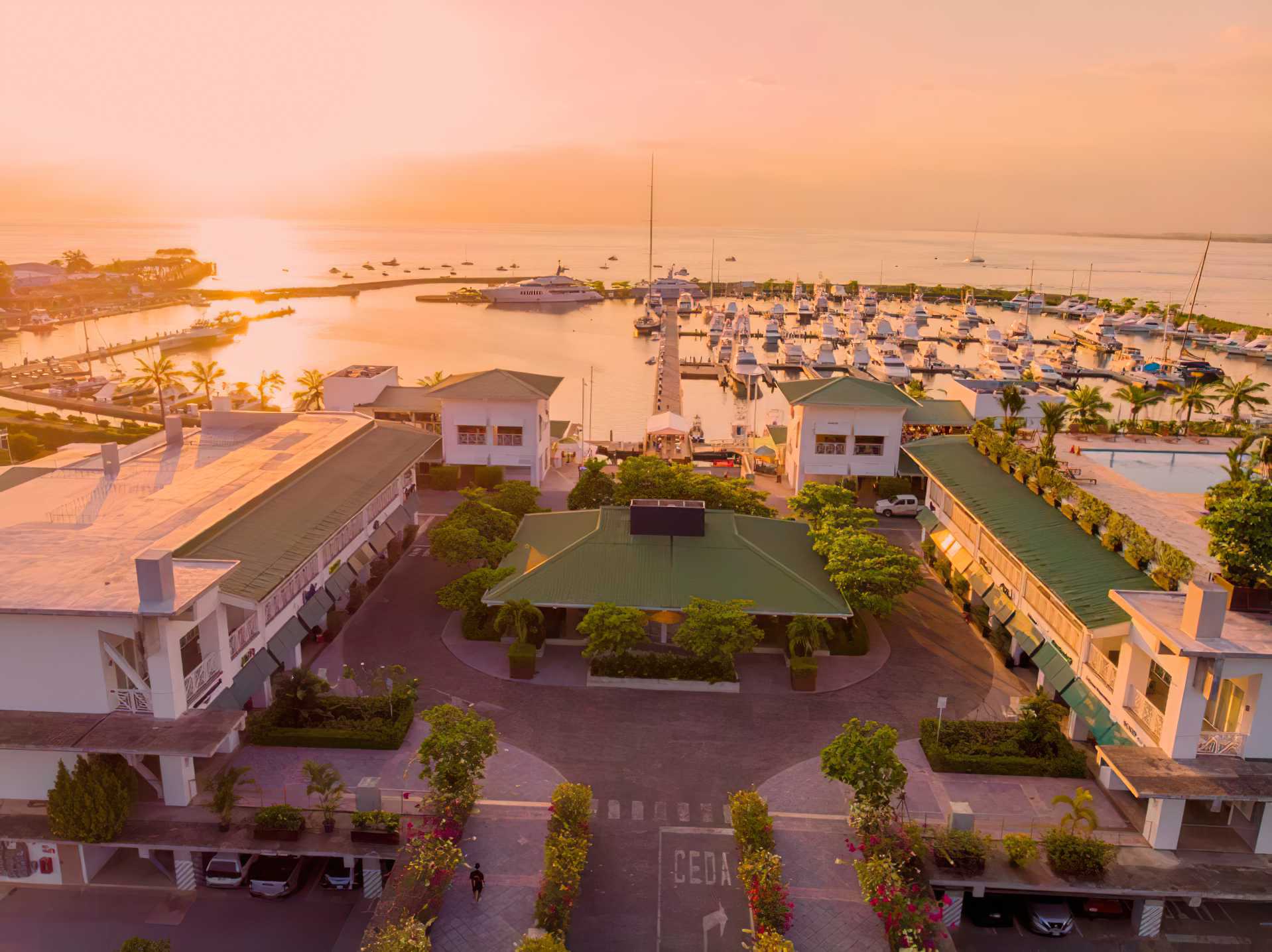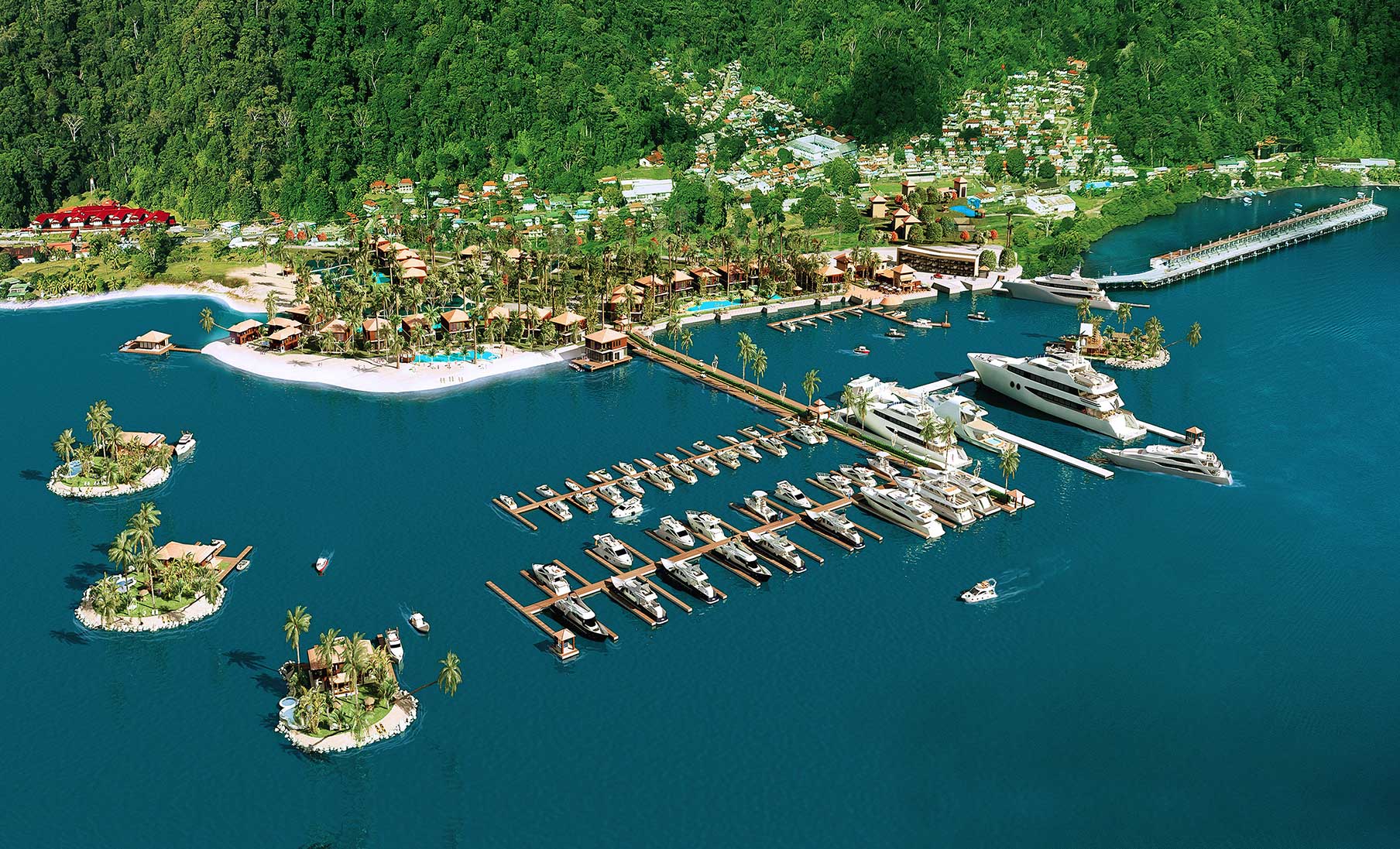Affectionately known as the ‘coconut milk run’, the sailing passage from the Americas to Australasia sees hundreds of yachts make passage every year as owners chase the sun. Close to the mouth of the Panama Canal, Costa Rica should have been a prime spot on the route, but its restrictive marina laws meant the country has long been bypassed for the neighbouring shores of Panama and Mexico. But that’s all about to change as a new marine law is set to transform Costa Rica into a must-visit destination for yacht owners and charter guests.
The Costa Rica Legislative Assembly (Congress) has passed a major milestone agreeing to open up the country to international superyacht operations for the first time. The reform will make entry via water easier and more flexible and enable vessels over 24m (79ft) to charter legally and remain in Costa Rica for up to one or even two years at a time.
It’s been a long time coming for the country which, with its incredible biodiversity, beautiful national parks and tropical coastline stretching 800 miles, is a natural destination for luxury yachting. News has been welcomed by the global superyacht industry who expect the country to follow in the path of emerging superyacht hubs like Greece, Turkey and Montenegro.
The bill is expected to come into fruition by September 2021 following longstanding lobbying by the Costa Rica Marina Association with advice from an advisory board from Fraser Yachts and support from Costa Rica’s President Carlos Alvarado Quesada. “Opening our country and our waters to foreign-registered charter vessels above 24m is an important step in enabling you to experience the nature, the lifestyle and the people that make Costa Rica unique,” says President Alvarado Quesada. “On behalf of the people of Costa Rica, we welcome you with open arms. Your time spent here will be time you will never forget.”
To find out what the new law means for Costa Rica and the global superyacht industry, I speak with Jeff Duchesneau, President of Marina Pez Vela and board member of the Costa Rica Marina Association.

How does Costa Rica compare to established luxury yachting destinations in the Caribbean?
Costa Rica is a beautiful country with so much to offer, especially in terms of wildlife. Once you’re on land, from any of the marinas you’re probably five minutes from seeing monkeys, sloths or scarlet macaws. It’s all right there. Is Costa Rica ready to give you white glove service? I don’t think so. I just don’t think we have enough experience in that game. But a very unique, fun, high-class, family adventure? I think we can play really well in that. A few weeks ago, we had Bill Gates and some others here. They set out some beautiful anchorages in Costa Rica, took the helicopter out to explore the island, and their crew and support staff used the marina and all the facilities to take care of the owner. That’s another very typical type of set up – our marinas and infrastructure set the base so you can supply and take care the owners, but then they spend a lot of their time on land.
How is Costa Rica set up to accommodate superyachts?
Costa Rica has five marinas: Papagayo and Los Sueños in the north, Pez Vela in Quepos, and Bahía Golfito and Banana Bay in Golfito in the south. Papagayo and Golfito have lots of space and they’re built for megayachts and superyachts. They can take 350ft yachts on their docks. In Papagayo, you also have all the accompanying amenities and infrastructure with the Papagayo Peninsula and the Four Seasons, and Liberia International Airport where you can part your private jet. Here in Quepos, in the centre of Costa Rica, we have different breakwaters. I can only take a 200ft vessel here, but you can anchor and tender in. The south, meanwhile, is untapped jungle. You won’t have all the services and facilities in Golfito, but you are almost off the grid, with jungle all around and natural wildlife. It’s an experience.
What route do you think charter yachts would take in Costa Rica?
I think if you’re here for two weeks you’d go to the north, the central and the south so you’d get to see all sections of the country, and then you’d go to Cocos Island. It’s take a day and a half to get there but once you’re there, it’s a pristine Jurassic Park-style island not unlike the Galapagos. I think the logistics to get there is a little easier than the Galapagos. From there, you’d figure out if you’re going back down the Canal or keep going to the Pacific.
What’s the reaction been from the charter market and how will Costa Rica fit into the ‘coconut milk run’?
There’s a been a lot of interest. Everyone wants to be at the very first official licensed charter in Costa Rica. I do think we’ll become part of this new Pacific Travel Network. I think that there is a Pacific destination itinerary that’s going to emerge. I think Panama is in it because of the Canal. Costa Rica is now in it. If you were to go north, I think Mexico is in it and maybe Vancouver and Alaska. If you were to go south, maybe Peru and Chile, and if going to go west in the Pacific then you’re going to go to Tahiti and the French Polynesian islands.
Why has the new marina law taken so long to pass?
Costa Rica is a wonderful, beautiful country but it’s very slow to change. It took a while to get here and I think the pandemic helped. We have Spanish phrase, ‘no hay mal que por bien no venga’, which simply translates to ‘there’s nothing bad that ever happens that doesn’t bring something good with it.’ I think we’re going to look back at the pandemic and realise it was one of those moments that helped to transform Costa Rica’s marine industry. It forced the country to reflect on that we need to do to grow a new segment of tourism, and we had the opportunity to do that with the new marina law.
What are the law’s primary benefits?
There are three aspects that are important to understand. The first person it helps is the private boater – the owners who owns his own vessel and wants to come to the country and explore with his own boat. Before this law, you were allowed only 90 days on your boat, and then you had to get your boat out of the country for 90 days before you could come back. It was ridiculous, particularly as our fishing and tournament seasons are five months. To bring your boat to a foreign country on the Pacific side of the Panama Canal and then to be told you’ve got to get out of here when you’re a wonderful paying customer wasn’t the right attitude. The law now gives you temporary import status, six months from the time you get here, which doubles the time. It’s then renewable up to three times, up to two years.
Another part of the law opens up the country to chartering. Before the law, if you didn’t have a Costa Rica flag on your boat, you couldn’t do any type of lucrative activity in Costa Rica, including chartering. You can now take a 24m and above charter, get a chartering license from the tourism board of Costa Rica and charter your vessel. The vessel cannot be used for fishing activities, however, to avoid disrupting the local fishing industry.
The third aspect of the law is what it did for marinas like ours. They extended our concession period – we previously had a 35-year concession, now we have a 40-year extension, and our renewal periods are now 20 years instead of 15 years. So, as an owner there’s more incentive for me to build the new phase or build a hotel. I love the law for that reason. It helps marinas, it helps luxury charters, and it helps visiting boats and private owners.
What’s the expected economic impact for the country?
The reform will have huge economic benefits. When these guests, who are spending from $250,000 to $1m a week chartering a yacht, come to Costa Rica, they’re eating at the best restaurants, visiting the spas, buying provisions, hiring help – they have a big impact on the community. And it’s not just about the owners or guests. When the yacht’s in town, the crew will be heading out into town, booking the canopy tours and doing expeditions. Everyone benefits.
Source:
Forbes
Footnote:
Contact Seal Superyachts Costa Rica for detailed information about cruising around Costa Rica, superyacht charter regulations and about how we can support your visit.
Principle agent is proud to have worked with many of the World’s largest Superyachts and has extensive knowledge of Costa Rica and the surrounding area.
Phone:
Email:
